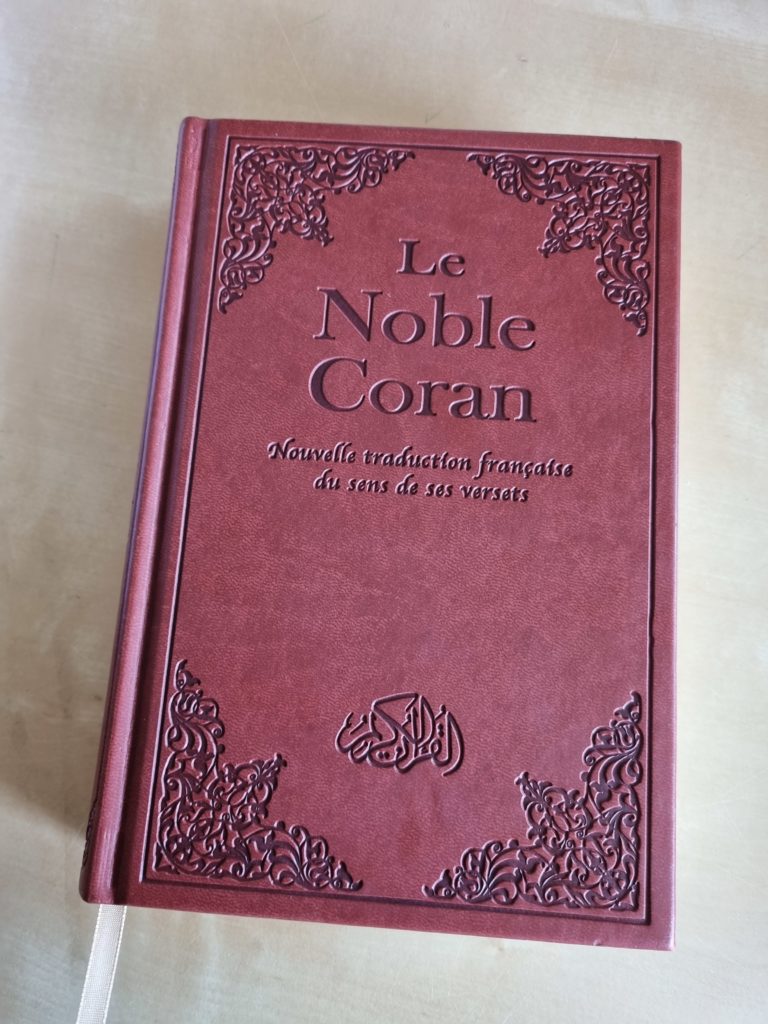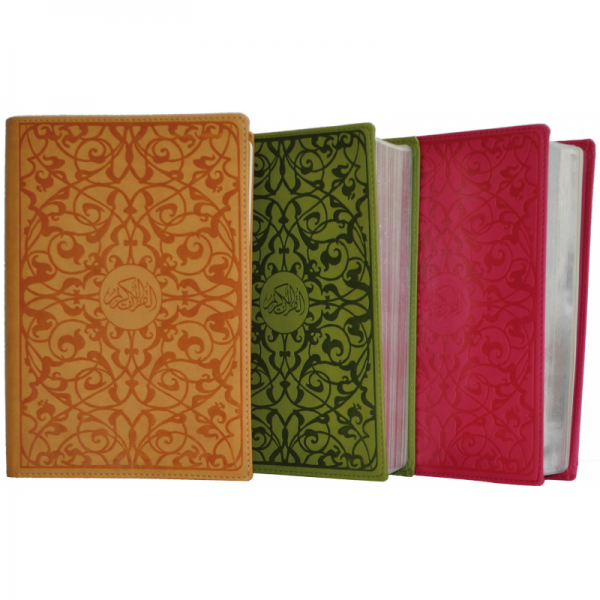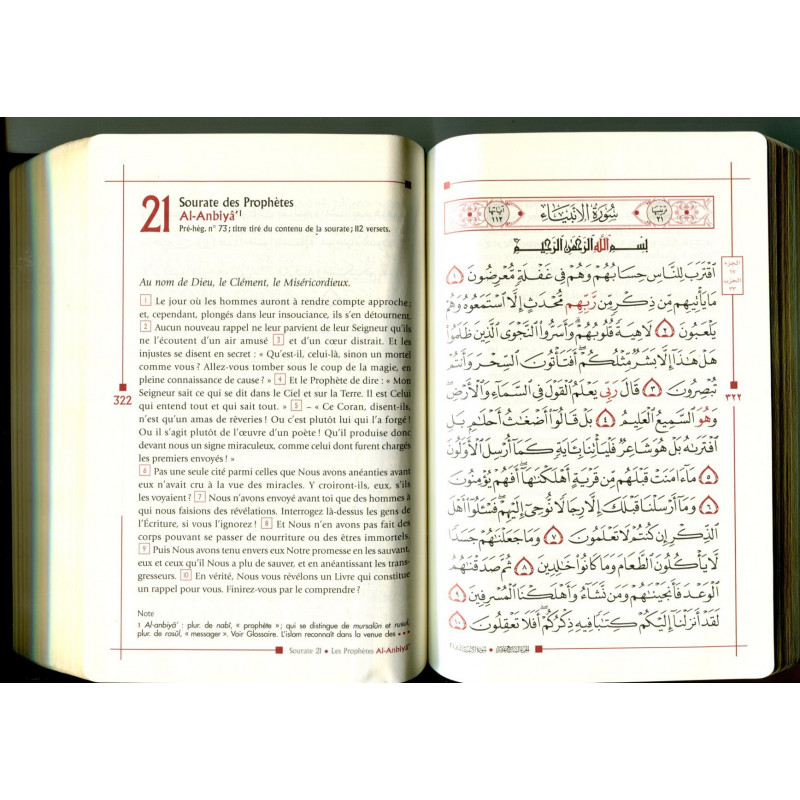How does one translate the Qur’an into a language that has developed in a predominantly Christian context, and whose religious vocabulary has been shaped by that context? This is a question that all translators of the Qur’an into Western European languages grapple with. This is even more the case when Muslim translators are addressing a Muslim target audience. The linguistic choices they make are inextricably tied to processes of identity formation and boundary work. Should they stress Islam’s proximity to Christianity, or the difference between both religions? Should they emphasize the Arab origins of Islam, or its universality? Should they provide Muslim migrants to Europe and their descendants with a language that facilitates interreligious dialogue with the non-Muslim majority, or one that will help them connect to their countries of origin? Should they imitate the style and vocabulary of preceding Orientalist Qur’an translations, or should they try to create new and different forms of expression instead?
In Mohammed Chiadmi’s French Qur’an translation Le noble Coran: Nouvelle traduction française du sens de ses versets, we find a case study of how translators, editors, and publishers reflect on such questions in the twenty-first century when millions of Muslims speak French as their first language.
Chiadmi (1924–2016) was born in al-Jadida, Morocco, into a family of religious scholars and mystics. He received a hybrid education that combined secular schooling with training in the Qur’an and religious learning. Later, he obtained degrees in education and translation. Originally a high school teacher, he rose in the Moroccan bureaucracy after independence until he reached top positions, first in the Ministry of Education and later in the Ministry of Religious Endowments and Islamic Affairs, with a focus on cultural relations with France that he presumably owed to his fluency in French.
According to his foreword, the idea of translating the Qur’an goes back to the year 1975 when he was sent to France by the Ministry of Religious Endowments and Islamic Affairs with a group of ulema to organise religious events for Moroccan labour migrants. There, he found that many young migrants did not have a good command of Arabic and complained about the lack of a reliable French Qur’an translation. Only after retirement did he find the time to write his translation, which took him twelve years.
Chiadmi’s foreword starts with a lengthy justification of the permissibility of translating the Qur’an. That this was considered necessary in 2004 is slightly surprising. It might have to do with the Moroccan context in which Chiadmi worked, where knowledge of classical Arabic is a matter of prestige, and some might expect French Muslims to master Arabic rather than use translations to understand the Qur’an. Having justified his translation, Chiadmi gives little information on the principles that guided him as he produced it. He merely points out that he wanted to avoid the mistake of some of his predecessors who had followed the style and syntax of the source too closely without taking into consideration the fundamental linguistic differences between Arabic and French. He adds that, wherever he expanded on a Qur’anic expression to facilitate comprehension, he relied on the authoritative exegetical tradition.
The editor’s introduction, which precedes the author’s foreword, is much more extensive. Presumably it was written by Yamin Makri, a French dentist who founded the Union des jeunes musulmans (UJM; ‘Young Muslims’ Association’) in Lyon in 1987, and also the attached publishing house, Éditions Tawhid. UJM and Tawhid pursue a type of Muslim social activism with conservative Sunni leanings that is inspired by the ideas of the Muslim Brotherhood. They have close connections with Tariq Ramadan, who has gained a reputation for advocating a ‘European Islam’. This notion is reflected in the makeup of the editorial team, which includes French Muslims with roots in the Maghreb, West Africa, Asia, and Europe, and is thus not tied to any particular country of origin.
Chiadmi’s translation was first published in 2004, followed by a revised edition in 2019. It is available as both a monolingual French and a bilingual French-Arabic edition, beautifully produced with thick paper, an aesthetically pleasing layout, and a soft faux leather cover. Several luxury editions with covers in different colours are also on offer. It is one of the most widely sold Qur’an translations in Islamic bookstores.
The monolingual French edition contains fifteen pages of introduction and more than 100 pages of appendices and annexes, including introductions to the history of the Qur’an and the biography of Muhammad, maps, a glossary, an index, and a bibliography.
It is somewhat unclear what impact the rather large editorial team had on Chiadmi’s work. There are certainly some differences between the semantic choices he made in the translation and those employed in the paratexts. Moreover, the translation comes with notes that might also have partly been written by the editorial team. In any case, the editor’s introduction gives far more detailed information on the decisions underlying the translation than Chiadmi’s own foreword.
The introduction describes the history of French Qur’an translation as a dichotomy between literal translations that privilege the Arabic source text (e.g. Hamidullah) and those that freely deviate from the structure of the Arabic Qur’an to construct a stylistically convincing French target text (e.g. Blachère). Chiadmi’s translation is then positioned between these extremes as a translation that strives to facilitate comprehension while remaining faithful to the source text. This is, of course, an extremely common trope and by itself is not very meaningful.
Things become more interesting, and more concrete, when the editor discusses specific linguistic choices, which he situates against the backdrop of an orientalist tradition of translating the Qur’an. For example, he criticises the Orientalists for generally having falsely translated the term kāfir as ‘unbeliever’ (‘mécréant’) while it would be more appropriate to render it as ‘denier’ (‘négateur’), since the kāfir is a person who denies his natural inclination to God (fiṭra). In the actual translation, however, we sometimes find kāfir translated as ‘infidèle’ (e.g. Q 2:6).
Some terms, such as ṣalāt and zakāt, have consciously been left untranslated because, according to the editor, common generic translations such as ‘prayer’ and ‘alms’ do not convey their full and specific meaning, whereas precise translations such as ‘impôt social purificateur’ (‘purifying social tax’) for zakāt are cumbersome. Significantly, the editor expresses the hope that, by using the Arabic terms for these concepts, they might enter the vocabulary of the French language.
In most other cases, French terms are used where available. Unlike most Muslim translators of recent decades, Chiadmi renders Allāh as ‘Dieu’ (‘God’) to signify that this is not merely the God of Muḥammad but the God of all prophets and of all mankind. Divine Names such as al-raḥmān are also translated to ensure easy readability even though, according to the editors, the term ‘clément’ (‘merciful’) chosen to render al-raḥmān, for example, is not a full equivalent. For the same reason, namely, ‘to demonstrate the continuity of the divine Message throughout his messengers of the three monotheistic religions’, the names of prophets, angels, and Biblical figures are rendered in French – for example, ‘Marie’, rather than ‘Maryam’. However, the notes mention the Arabic equivalents of these names, and in the index the Arabic form is even placed first.
Stylistically, the translation aims for readability, as is underlined by the arrangement of groups of thematically connected verses in paragraphs. Unlike some previous translators, Chiadmi has filled in some ellipses in the Arabic text, rearranged it to meet the rules of French syntax, and avoided overly literal translations or outdated vocabulary. Consider, for example, the beginning of the second surah (Q 2:2–3):
ذَٰلِكَ الْكِتَابُ لَا رَيْبَ فِيهِ هُدًى لِّلْمُتَّقِينَ
الَّذِينَ يُؤْمِنُونَ بِالْغَيْبِ وَيُقِيمُونَ الصَّلَاةَ وَمِمَّا رَزَقْنَاهُمْ يُنفِقُونَ
Muhammad Hamidullah (on whose translation, see https://gloqur.de/quran-translation-of-the-week-07-le-saint-coran-and-its-convoluted-publication-history/), remaining close to the Arabic syntax and vocabulary, had rendered these verses as:
Ce Livre, point de doute, voilà une guidée pour les pieux qui croient à l’invisible et établissent l’Office et font largesses de ce que nous leur avons attribué …
(This Book, no doubt at all, this is a guidance for the pious ones who believe in the invisible and establish their Service and make generosities from what we have granted them …)
This somewhat cryptic rendition, which stays extremely close to the source text, is accompanied by extensive notes that practically drown out the translation itself. Chiadmi, conversely, slightly expands his translation to facilitate comprehension, which reduces the need for annotation:
Voici le Livre qui n’est sujet à aucun doute. C’est un guide pour ceux qui craignent le Seigneur; ceux qui croient à l’invisible, qui s’acquittent de la salât et qui effectuent des œuvres charitables sur les biens que Nous leurs avons accordés …
(This is the Book that is not subject to any doubt. It is a guide for those who fear their Lord; those who believe in the invisible, who perform charitable works from the goods We have granted them …)
In some cases, Chiadmi’s translation emulates the Qur’anic rhyme, such as in Q 88:
2 Le jour où elle se produira, il y aura des visages mortifiés,
3 abîmés, harassés
[…]
12 et où ils disposeront d’une source aux eaux vives,
13 de lits surélevés,
14 de coupes à leur portée,
15 de coussins alignés
16 et de tapis étalés.
However, this does not go significantly beyond the attempts made in earlier French translations, for example by Hamidullah and Ould Bah.
Expanding the Qur’anic text, filling in its ellipses, and annotating it requires an exegetical framework. The editor, in his introduction, delivers extensive explanations of that framework, which is based on paradigms that are extremely commonplace today. He emphasises the authority of sound traditions (tafsīr bi’l-maʾthūr) and claims to strive for the exclusion of personal opinions, material of questionable origin, or interpretations that are exclusive to a particular school of law. Interestingly, he also rejects scientific interpretations of the Qur’an because, he says, ‘the Qur’an is not a book of science’.
According to the editor, the translation and the notes are based on the Qur’anic commentaries by al-Qurṭubī, al-Ṭabarī, and Ibn Kathīr, or more precisely, on opinions that are unanimously or near-unanimously held by all three of these exegetes. Nevertheless, the translation contains some choices that have no foundation in these exegetical works, for example the rather peculiar opinion that the Qur’anic Sabians (al-Ṣābiʾūn, Q 2:62) are the followers of the prophet Idrīs. The controversial imperative fa-ḍribūhunna in Q 4:34 is translated as ‘correct them’ (‘corrigez-les’) rather than the more literal ‘beat them’, even though all of the three supposedly authoritative exegetes clearly understood the verse as permitting husbands to physically discipline their wives. The lengthy footnote provided on this particular word reinforces the impression that this choice was mainly driven by apologetics.
The focus of Chiadmi’s translation, however, was clearly not on exegesis; the commentary rarely goes beyond delivering some background information and explanations of ritual duties. Rather, the main goal of this work is to find an appropriate language and style for rendering the Qur’an’s meaning in French in a way that will make sense in a French social and linguistic context while staying true to the specificity of Islamic concepts.
This is an ongoing process, of course. Hamidullah’s original translation of 1959, despite its structural closeness to the Arabic source text, still largely followed the semantic choices of Orientalists and used French terminology even when it had Christian connotations. When the King Fahd Complex in Saudi Arabia revised his translation in 1990, it replaced many of these French terms with Arabic ones: thus ‘Dieu’ became ‘Allah’ and ‘prière’ or ‘Office’ became ‘ṣalāt’. It is clear that by the 2000s, French Muslim authors, translators and publishers felt confident enough to navigate these options, choose freely from them, and expect their choices to shape the French language – a language in which they hope the terms ‘salat’ and ‘zakat’ will one day be on a par with ‘baptême’ (‘baptism’) and ‘communion’.
Johanna Pink







